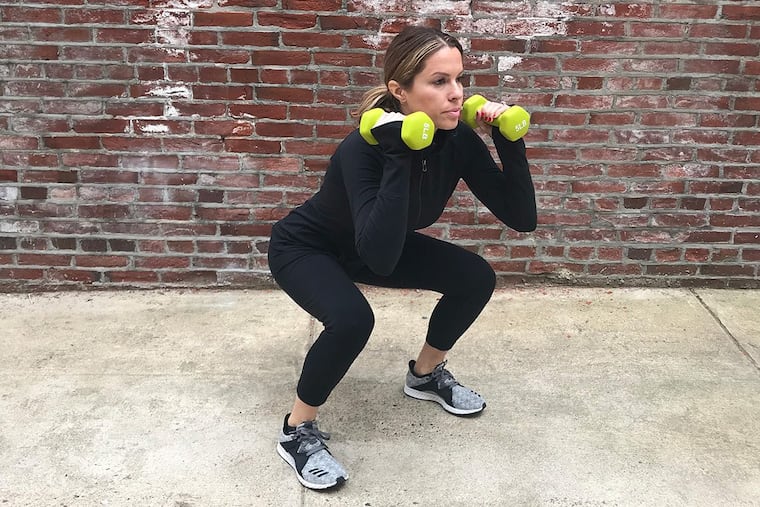A beginner’s guide to safely picking the right weights for strength training
To become a lean, mean, endurance-enhancing machine, your program should consist of high repetitions (12 or more) with lighter weight. Conversely, to encourage muscle mass growth, lower reps (somewhere between 6 and 12) with higher weight is ideal.

Are you watching your weights? Resistance training should be included in everyone’s weekly workout plan. Not only does strength training have the power to amp up your appearance, it also increases bone and muscle mass, reduces stress, and helps to lower high cholesterol, glucose and blood pressure readings.
And still, many of us continue to avoid these exercises entirely due to doubts and confusion over one common question: “How do you choose the right size weights for a strength training workout?”
Take that extra weight off your mind by following this simple, pound-picking guide:
Power in numbers. Before grinding it out at the gym, determine your goals and assess your current physical strength.
For those aiming to become a lean, mean, endurance-enhancing machine, your program should consist of high repetitions (12 or more) with lighter weight. Conversely, if you want to encourage muscle mass growth and burn more calories, lower reps (somewhere between 6 and 12) with higher weight is ideal.
This training technique is similar to that of long-distance runners and sprinters. Distance runners — similar to high-rep, low-weight lifters — prepare their bodies with long, low-intensity runs. Their physiques tend to be leaner, as a result.
Sprinters, on the other hand, require forceful, fast twitch muscle fibers to help rapidly push their feet off the ground and gain momentum. Their workouts consist of short, high-intensity exercises to increase strength. A sprinter’s shape will look more muscular.
A fight to the finish. Proper form is the foundation of every safe, successful fitness routine. If you are sloppy, shaky or aggressively shifting your body weight with each repetition, injury is inevitable. From the first rep to the final set, your form must stay firm. If not, chances are your weight choice is too ambitious.
Another rule to remember when engaged in resistance training is that it’s not about how you start, but how you finish. If you can cruise through your conditioning course, your weights aren’t heavy enough. The first few reps should be challenging, and as you progress, those final reps should start to feel hard and heavy, as if your inner Hercules is about to hatch.
Muscles matter. Not all muscles are created equally. Those located in the lower body, such as the glutes, hamstrings and quads, are large, powerhouse muscles that can handle a heftier haul. Smaller muscles found in the arms, chest and back, require a lighter load.
Ultimately, there will be some trial and error with finding the perfect pounds because everyone’s strength level varies. But because safe, proper form is first and foremost when exercising, concentrate on mastering the movements, and only then should you graduate to a higher weight load that matches your muscles.
When it comes to weight training, knowledge is power.
Ashley Blake Greenblatt, ACE-CPT, is a certified personal trainer and wellness coach with a focus on movement and mindfulness. To learn more, visit ashleyblakefitness.com.